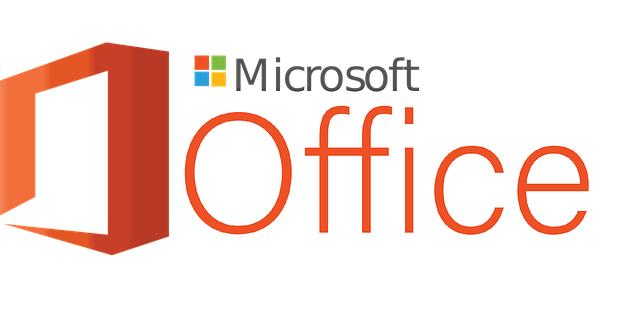
Master remote team communication! Explore top tools, asynchronous strategies, and proven techniques for precise, efficient, and engaging collaboration across time zones.
Table of Contents
Introduction
In today’s digital age, remote work has become increasingly common, making effective communication and collaboration essential for team success. Finding the right tools to keep your remote team connected and productive can be challenging.
Importance of Remote Team Communication
Remote teams achieve successful collaboration by communicating effectively. When members work in different locations, teams prioritize clear and frequent communication. They stay aligned and connected by holding regular check-ins, making video calls, and using instant messaging. Team members share updates, discuss progress, and address challenges promptly, keeping projects on track. Good communication builds trust and understanding, making teamwork easier and more effective.
Try these 10 collaboration tools.
1.Slack
Slack is a widespread communication and collaboration platform that is widely used in the workplace. It offers:
- Real-time messaging
- Channels for organized conversations
- File sharing and integration with other tools
- Voice and video calls
Slack’s user-friendly interface and customizable notifications make it easy for teams to stay connected and informed. It also integrates with numerous third-party apps, enhancing its functionality.
Key Features:
- Threaded conversations
- Searchable message history
- Custom emoji reactions
- Slack bot for automated tasks
Learn more about Slack’s features.
2.Microsoft Teams

Integration with Power Automate
Microsoft Teams can be seamlessly integrated with Power Automate, allowing users to create custom workflows and automate repetitive tasks directly within the Teams environment.
Microsoft Teams is a comprehensive collaboration platform that combines chat, video meetings, file storage, and app integration. It’s beneficial for organizations already using Microsoft 365.
Benefits:
- Seamless integration with Microsoft 365 apps
- Robust security features
- Large file storage capacity
- Customizable tabs and channels
Teams also offer a variety of third-party app integrations, making it a versatile choice for remote teams.
3.Zoom
Zoom is a popular communication platform that provides video telephony and online chat services through a cloud-based peer-to-peer software platform.
Here’s a breakdown of key aspects:
- High-quality video and audio calls
- Screen sharing and annotation tools
- Breakout rooms for small group discussions
- Recording and transcription features
Zoom’s ease of use and reliability make it a top choice for remote teams needing face-to-face communication.
Pro Tip: Use Zoom’s virtual backgrounds to maintain privacy or add a fun element to your calls.
4.Trello
Trello is a visual project management tool that uses boards, lists, and cards to organize tasks and workflows. Its key features include:
- Drag-and-drop functionality
- Customizable boards and cards
- Checklists and due dates
- Power-Ups for added functionality
Trello’s intuitive design makes it easy for teams to track progress and collaborate on projects.
5.Asana
Asana is a popular project management and team collaboration tool. Create, assign, prioritize, and track tasks with due dates, deadlines, and assignees. It offers:
- Task assignments and deadlines
- Project timelines and Gantt charts
- Custom fields and templates
- Workload view for resource management
Asana’s flexibility allows teams to adapt to various project management methodologies, from Agile to traditional approaches.
6.Google Workspace

Google Calendar’s Appointment Scheduling
Google Calendar offers an appointment scheduling feature that allows users to create bookable time slots. External parties can view available times and book appointments directly, simplifying the process of scheduling meetings with clients or colleagues.
Formerly known as G Suite, Google Workspace offers a suite of productivity and collaboration tools, including:
- Gmail for email communication
- Google Drive for file storage and sharing
- Google Docs, Slides, and Sheets for collaborative editing
- Google Meet for video conferencing
The seamless integration between these tools makes Google Workspace an excellent choice for remote teams looking for an all-in-one solution.
Key Advantage: Real-time collaboration on documents, spreadsheets, and presentations.
7.Notion
Notion is a versatile workspace that combines note-taking, project management, and wiki functionality. Its features include:
- Customizable pages and databases
- Task management and to-do lists
- Knowledge base creation
- Team wikis and documentation
Notion’s flexibility allows teams to create a tailored workspace that fits their needs.
8.Basecamp
Basecamp is a project management and team communication tool offering a centralized remote team platform. It includes:
- Message boards for team discussions
- To-do lists for task management
- Schedules for project timelines
- Automatic check-ins for team updates
Basecamp’s all-in-one approach helps reduce the need for multiple tools, streamlining team communication and project management.

Automatic Check-ins
Basecamp offers automated check-ins, which can be scheduled to ask team members specific questions on a regular basis. This feature helps maintain consistent communication without manual intervention, ensuring everyone stays updated on progress and challenges.
9.Miro
Miro is an online collaborative whiteboard platform enabling teams to collaborate visually. It offers:
- Infinite canvas for brainstorming and ideation
- Templates for various use cases (e.g., mind mapping, user story mapping)
- Integration with other popular tools
- Real-time collaboration features
Miro is particularly useful for creative teams and those who rely heavily on visual communication.
10.Monday.com
Monday.com is a work operating system that allows teams to create custom project workflows. Its features include:
- Customizable boards and views
- Automation recipes
- Time tracking
- Reporting and analytics
Conclusion
Choosing the right collaboration tools for your remote team is crucial for maintaining productivity and fostering effective communication. Each tool mentioned in this article has its strengths, and the best choice depends on your team’s specific needs and workflows.
Consider factors such as:
- Team size and structure
- Project types and complexity
- Integration requirements
- Budget constraints
By carefully evaluating these factors and testing different tools, you can find the perfect combination to enhance your remote team’s collaboration and communication.
Remember, the key to successful remote teamwork is having the right tools, establishing clear communication protocols, and fostering a culture of collaboration. Encourage your team to provide feedback on your chosen tools and be open to adjusting your toolkit as your team’s needs evolve.
FAQ
1: What are collaboration tools for remote teams?
Collaboration tools are software applications that help remote teams work together effectively. They include features for communication, file sharing, project management, and more.
2: Why are collaboration tools necessary for remote work?
These tools are crucial because they enable seamless communication and coordination among team members working from different locations, helping maintain productivity and team cohesion.
3: What types of collaboration tools are available for remote teams?
Common types include video conferencing platforms, instant messaging apps, project management software, file sharing systems, and virtual whiteboards.
4: How can collaboration tools improve team communication?
They provide various channels for real-time and asynchronous communication, allowing team members to stay connected, share ideas, and resolve issues quickly, regardless of location.
5: Are collaboration tools challenging to learn and use?
Most modern collaboration tools are designed to be user-friendly and intuitive. Many offer tutorials, support resources, and simple interfaces to help users get started quickly.
6: Can collaboration tools help with team building in remote settings?
Yes, many tools include features for virtual team-building activities, informal chats, and shared spaces that can help foster team relationships and maintain a positive work culture.
7: How do collaboration tools support project management in remote teams?
These tools often include features for task assignment, progress tracking, deadline management, and file organization, helping teams stay organized and on schedule.
8: What should teams consider when choosing collaboration tools?
Teams should consider their specific needs, the size of their team, the nature of their work, security requirements, integration with existing systems, and ease of use.
9: Can collaboration tools help reduce email overload?
A: Yes, collaboration tools can significantly reduce the need for constant email exchanges by providing alternative communication channels and centralized information hubs.
10: How do collaboration tools support work-life balance in remote settings?
Many tools offer features like status updates, scheduled notifications, and time zone management, which can help team members maintain boundaries between work and personal time.





Great information shared.. really enjoyed reading this post thank you author for sharing this post .. appreciated
I very delighted to find this internet site on bing, just what I was searching for as well saved to fav
I do not even understand how I ended up here, but I assumed this publish used to be great
I’m often to blogging and i really appreciate your content. The article has actually peaks my interest. I’m going to bookmark your web site and maintain checking for brand spanking new information.
Thank you for being so supportive. will continue to add some articles within few days.
Very well presented. Every quote was awesome and thanks for sharing the content. Keep sharing and keep motivating others.
Thank you for being so supportive
This is really interesting, You’re a very skilled blogger. I’ve joined your feed and look forward to seeking more of your magnificent post. Also, I’ve shared your site in my social networks!
Thank you for being so supportive
Hi there to all, for the reason that I am genuinely keen of reading this website’s post to be updated on a regular basis. It carries pleasant stuff.
thankyou
Nice post. I learn something totally new and challenging on websites
I very delighted to find this internet site on bing, just what I was searching for as well saved to fav
Awesome! Its genuinely remarkable post, I have got much clear idea regarding from this post
This is really interesting, You’re a very skilled blogger. I’ve joined your feed and look forward to seeking more of your magnificent post. Also, I’ve shared your site in my social networks!
Your blog is a treasure trove of wisdom and positivity I appreciate how you always seem to know just what your readers need to hear
Good post! We will be linking to this particularly great post on our site. Keep up the great writing
I am truly thankful to the owner of this web site who has shared this fantastic piece of writing at at this place.
I really like reading through a post that can make men and women think. Also, thank you for allowing me to comment!
For the reason that the admin of this site is working, no uncertainty very quickly it will be renowned, due to its quality contents.
Pretty! This has been a really wonderful post. Many thanks for providing these details.
Nice post. I learn something totally new and challenging on websites
Great information shared.. really enjoyed reading this post thank you author for sharing this post .. appreciated
You’re so awesome! I don’t believe I have read a single thing like that before. So great to find someone with some original thoughts on this topic. Really.. thank you for starting this up. This website is something that is needed on the internet, someone with a little originality!
I like the efforts you have put in this, regards for all the great content.
I truly appreciate your technique of writing a blog. I added it to my bookmark site list and will
thank you